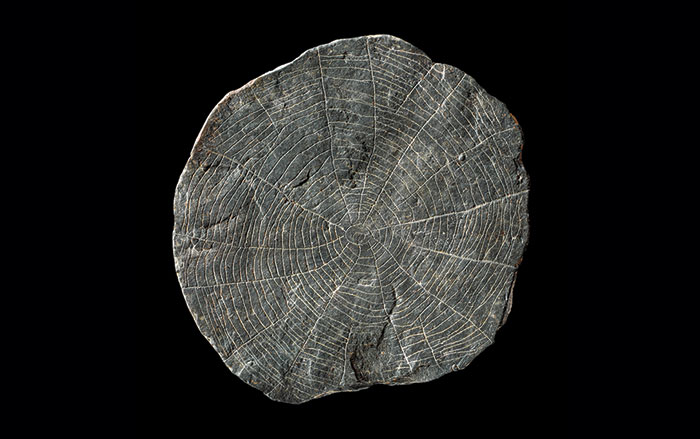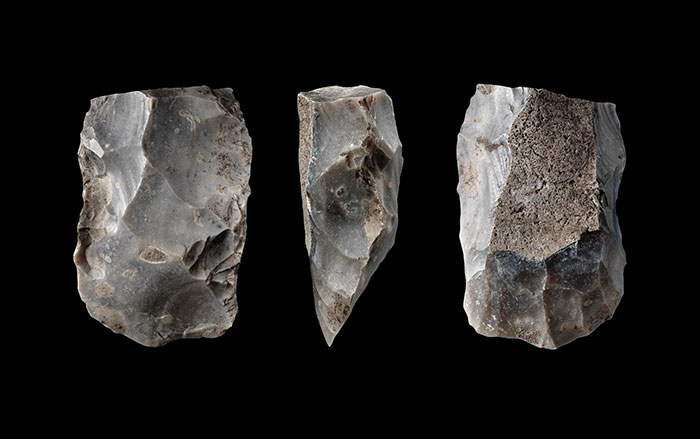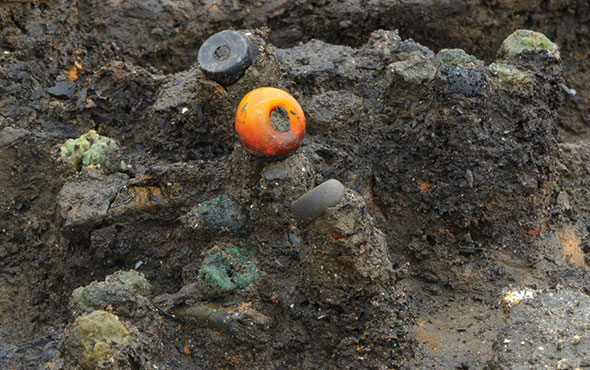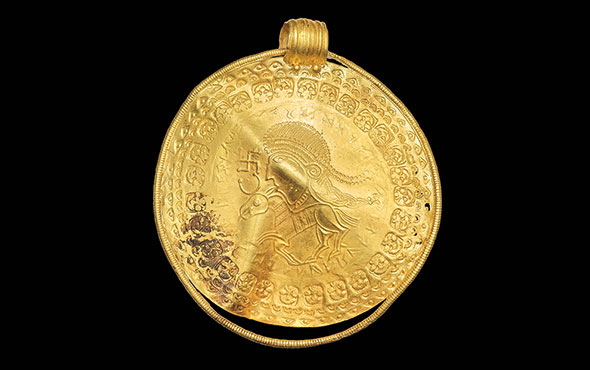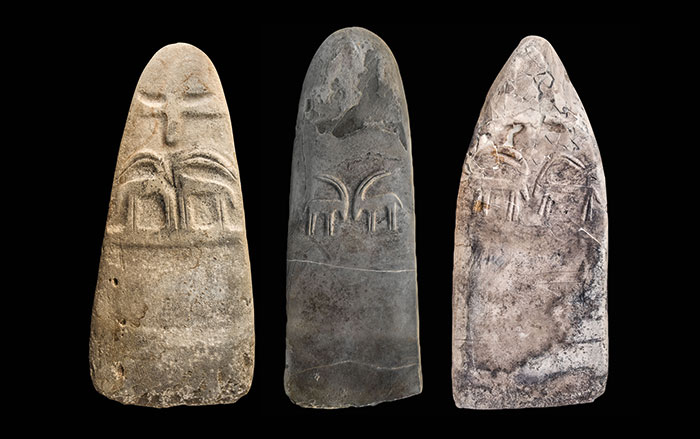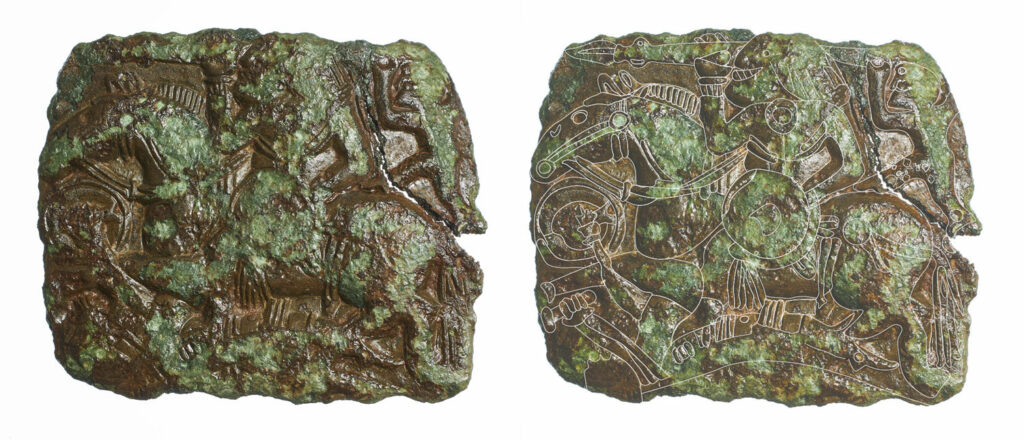
TÅSINGE, DENMARK—A statement released by the National Museum of Denmark suggests that the iconic Sutton Hoo helmet may have its origins in Denmark, and not Sweden, as previously thought. In 1939, the iron- and copper-clad helmet was discovered in Suffolk, England, within the elaborate ship burial of a seventh-century Anglo-Saxon ruler. For decades it has been considered one of the greatest treasures of the Anglo-Saxon period. Experts have long believed that the object may have been made in Uppland, Sweden, since its decorative motif of mounted warriors has similarities to examples found there. This same motif, however, has now been traced back to the island of Tåsinge, Denmark. A special kind of stamp called a patrice was recently found there that has even closer resemblances to the Sutton Hoo helmet. Strikingly similar details of the characters include the cuff of the warrior’s wrist, the warrior’s hair, the almond-shaped harness fitting on the horse’s head, its reins, and the sword protruding below the warrior’s shield. This has led researchers to reevaluate where the helmet was made. “Despite being made in very different places, many motifs are clearly inspired by each other,” museum curator Peter Pentz said. “But when the likeness is as strong as it is here, it could mean that they were not only made in the same place but even by the same craftsmen. That could provide strong evidence that the Sutton Hoo helmet was actually made in Tåsinge, which would make it an incredible find.” For more, go to "The Ongoing Saga of Sutton Hoo."



